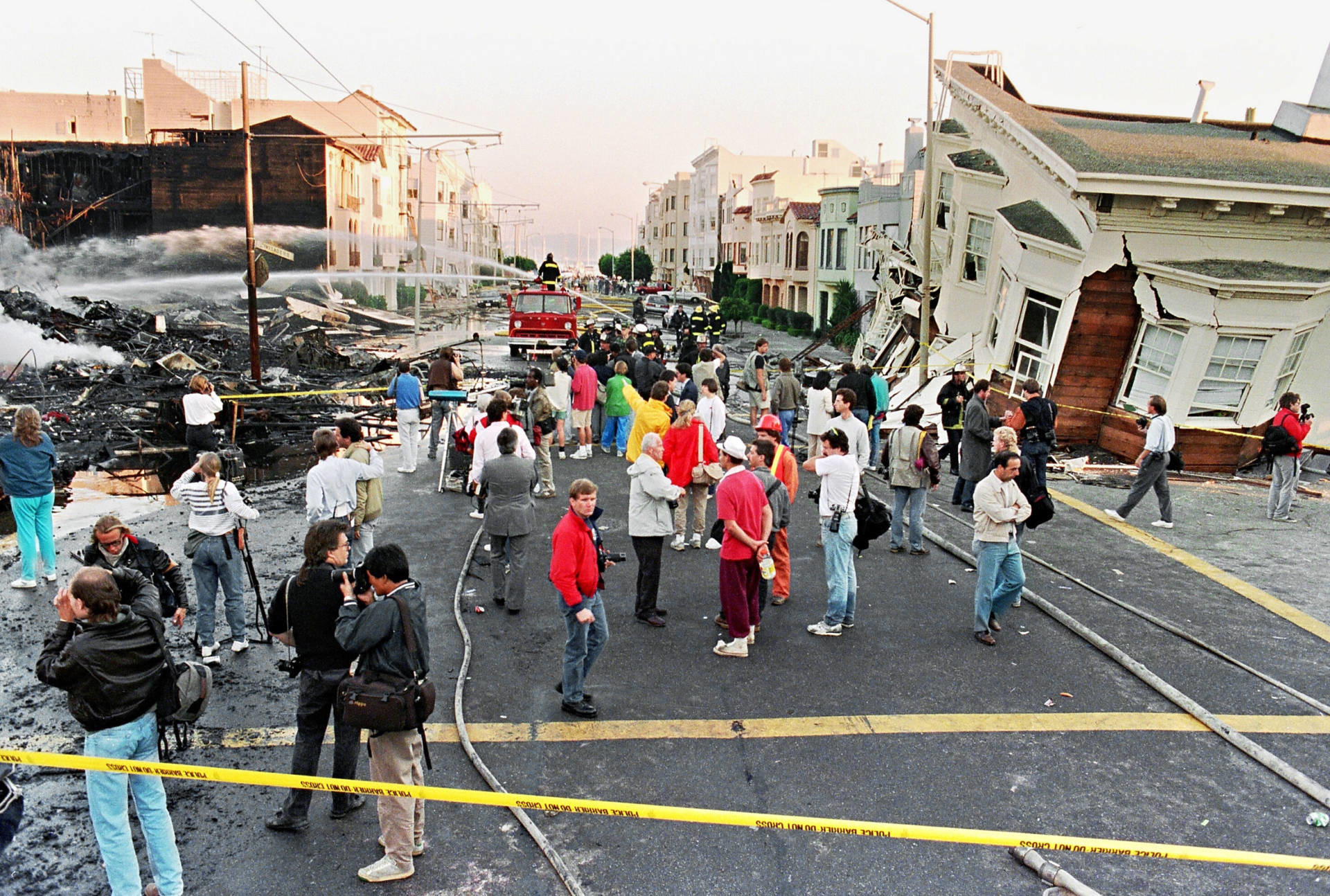Standing on a fire truck parked outside of Pump Station 2, at 3455 Van Ness Ave., firefighters pumped water from the San Francisco Bay through the pipes, and back into the Bay in a large stream.
The test marked the end of an eight-year, $20 million upgrade to Pump Station 2, part of the city’s auxiliary water supply system. The system should now be able to withstand a 7.9 magnitude earthquake, and will allow the city to have a limitless supply of water to respond to fires when a similar quake were to occur again here.
“This building has strengthened walls, a new roof, a new generator, and is designed to withstand a 7.9 magnitude earthquake, and it can operate even when the electric grid is down,” said Dennis Harry, general manager at the San Francisco Public Utilities Commission.
 Firefighters extinguish fires in the Marina District in San Francisco in October 1989 after the Loma Prieta earthquake erupted in the city. (Jonathan Nourok/AFP/Getty Images)
Firefighters extinguish fires in the Marina District in San Francisco in October 1989 after the Loma Prieta earthquake erupted in the city. (Jonathan Nourok/AFP/Getty Images)
But the water won’t reach all parts of the city equally. In bracing for “the big one,” city officials admit that some parts of the city are more prepared than others.
Katie Miller, the director of water capital programs at the San Francisco Public Utilities Commission, said that the western and southern parts of the city, like the Sunset and Richmond districts, have fewer pipes connected to the city’s water supply. Most of the pipe is in older parts of the city, like downtown.
“We have already installed about two miles of the pipe, and we have additional funding available for another four miles in the Sunset. But we’re looking to future emergency safety and earthquake response bond funding that will come to the voters in 2026 or 2028,” she said.
Mayor Daniel Lurie attended Thursday’s demonstration and told attendees the city is “always preparing” for the “Big One.”
“We have made real progress. We’ve upgraded our emergency water systems, strengthened our fire stations, and improved public safety infrastructure,” he said.

